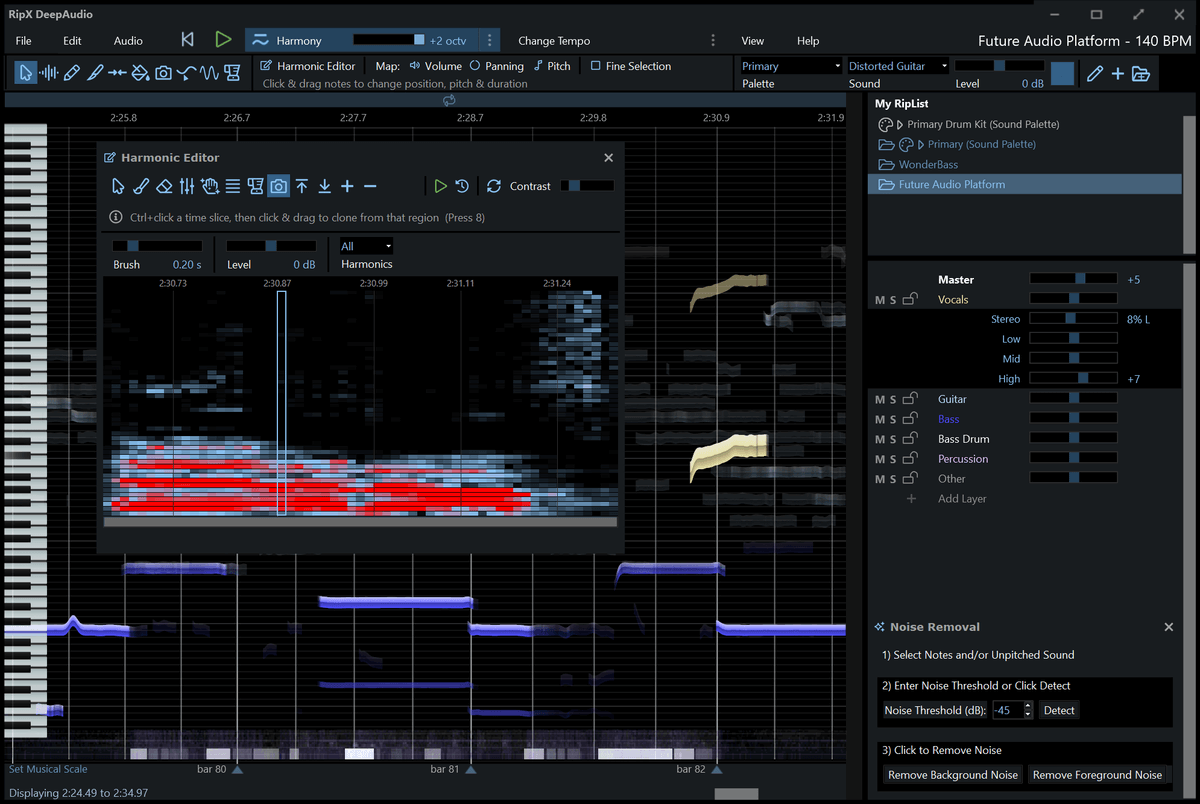

- AUDIONOTES REVIEWS HOW TO
- AUDIONOTES REVIEWS MANUAL
- AUDIONOTES REVIEWS SOFTWARE
- AUDIONOTES REVIEWS FREE
It’s useful for quickly measuring distances, but it can also be used to accurately set toe-in.Īs Paul suggests, I’ve used blue painter’s tape to mark the room’s center-line and the top of the “T,” in my case by carefully placing the edge of the tape along the laser lines. Additionally, no audiophile should be without a laser distance measure like the Bosch GLM165-40.
AUDIONOTES REVIEWS SOFTWARE
The software is available for Windows and macOS.If you’re curious, the lasers I have are the Firecore F112R and Black & Decker Line Laser, Auto-Leveling With AnglePro (sadly, no longer available). Samplab Premium is available for EUR 7 per month / EUR 70 per year.
AUDIONOTES REVIEWS FREE
The Premium variant lets you edit up to 100 seconds per audio file (it’s 10 seconds for the Free version) and outputs to Stereo (the Free version is mono). Samplab (plug-in & standalone) is available in Free and Premium variants. Let’s hope the clever Swiss dudes behind the software are in it for the long haul! Price and availability for Samplab (app & plug-in) It can see it evolve as a more affordable alternative to Melodyne‘s various incarnations until it matures into something all of its own. In the meantime, feel free to check out our little showcase of how far AI-powered plug-ins have gotten recently.Īll in all, Samplab is functional and very, very promising. One day, AIs will probably re-synthesize pitch-perfect audio on the spot. That’s in line with expectations from current technology. The algorithm sounds near perfect unless pushed to extremes. Together with pitch shifting, Samplab can time-warp audio in real time while retaining all transients. I’m sure more features will arrive in the near future as the technology advances. The software is both usable and ripe for expansion.
AUDIONOTES REVIEWS HOW TO
There’s no confusion whatsoever about what Samplab does and how to do it. The user interface is friendly to the point of sparseness. The note editing happens in an familiar-looking piano roll editor while tracks are laid out on a timeline with length and volume/velocity adjustments. Hopefully it won’t take too much guesswork before everything aligns and you can start editing. To that, you can fine-tune Tempo, Key, and Duration.
AUDIONOTES REVIEWS MANUAL
That’s nothing you can’t help with a little manual adjustment at import.

It may be off by a single beat, a half-tone, or a bar too long. You can also import a song or snippet, have it analyzed by the software, and use the key and tempo information to conform the loops to your track. In Samplab standalone, you can convert not one, but several tracks at once and match their key and tempo. The app does everything on your computer and comes with a significantly expanded feature set. The standalone software is a more convincing representation of the clever tech behind Samplab. While it did work as advertised, the plug-in relied on a server to generate MIDI and drop it in your DAW which is kind of cumbersome. Samplab began with a plug-in to convert polyphonic audio data into MIDI using an artificial intelligence (AI) into MIDI tracks. You can also change notes and tempo in already recorded performances instead of having to redo them. Combined, they make Samplab a powerful means of personalizing loops off of Splice, LoopCloud and the like. Both work well with some room for further refinement. There are automatic key / tempo detection and warping features, too. The principle is similar, but instead of MIDI, you are editing the loop (audio data) itself. It also works differently from Ableton’s audio-to-MIDI conversion. Like a Melodyne-lite of sorts, Samplab gives you the essential audio warping and re-pitching tools to quickly edit and transpose harmonic and percussive loops.

Speaking about it, you can read more about the plug-in version here. In other words, I don’t care that it’s not a plug-in. Besides, Samplab is incredibly straightforward and exporting edited loops or dropping them directly into your DAW project is a breeze. From my experience, the two have some beautiful audio analysis technology in their hands and if they believe in standalone, so do I.


 0 kommentar(er)
0 kommentar(er)
